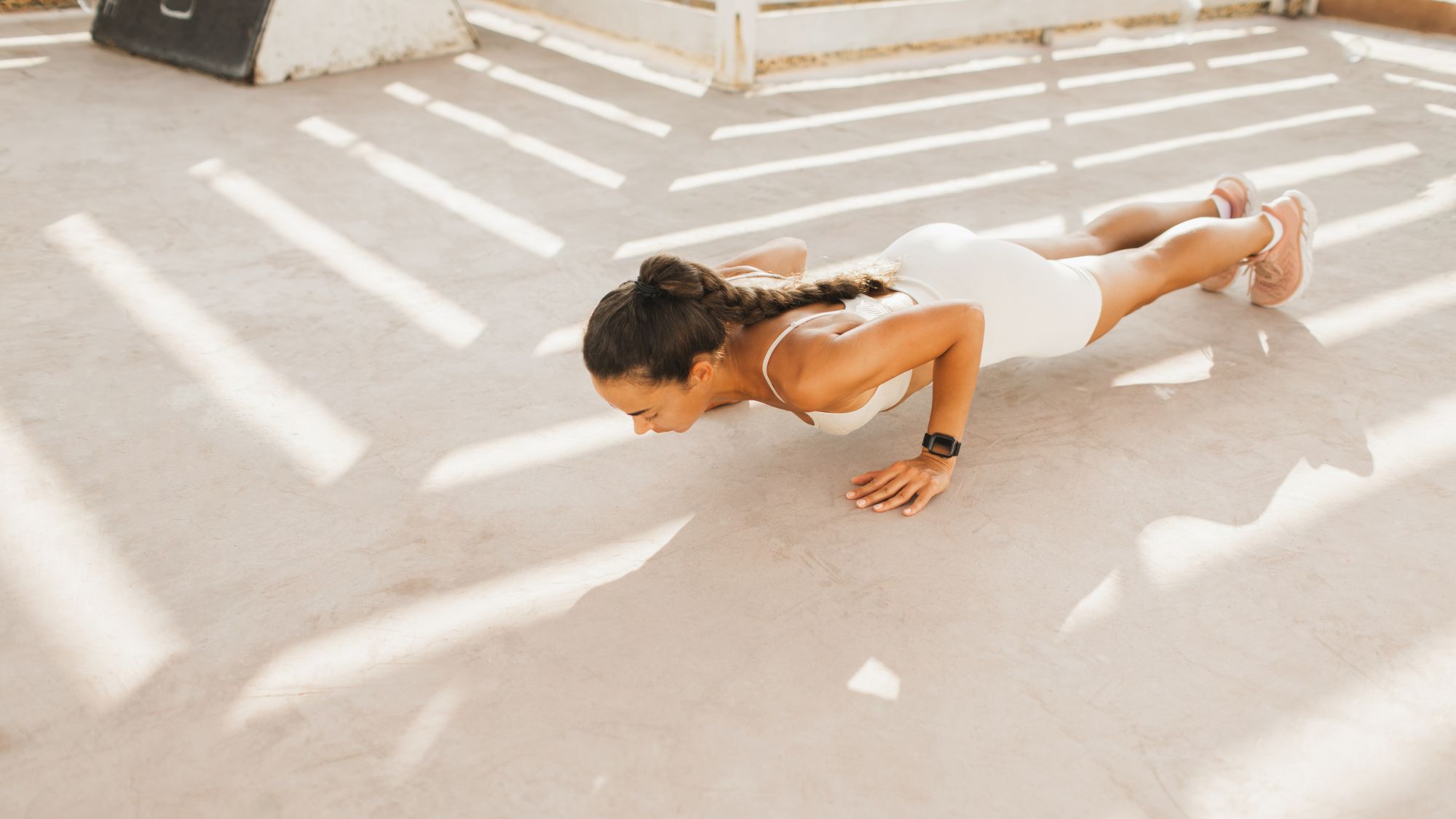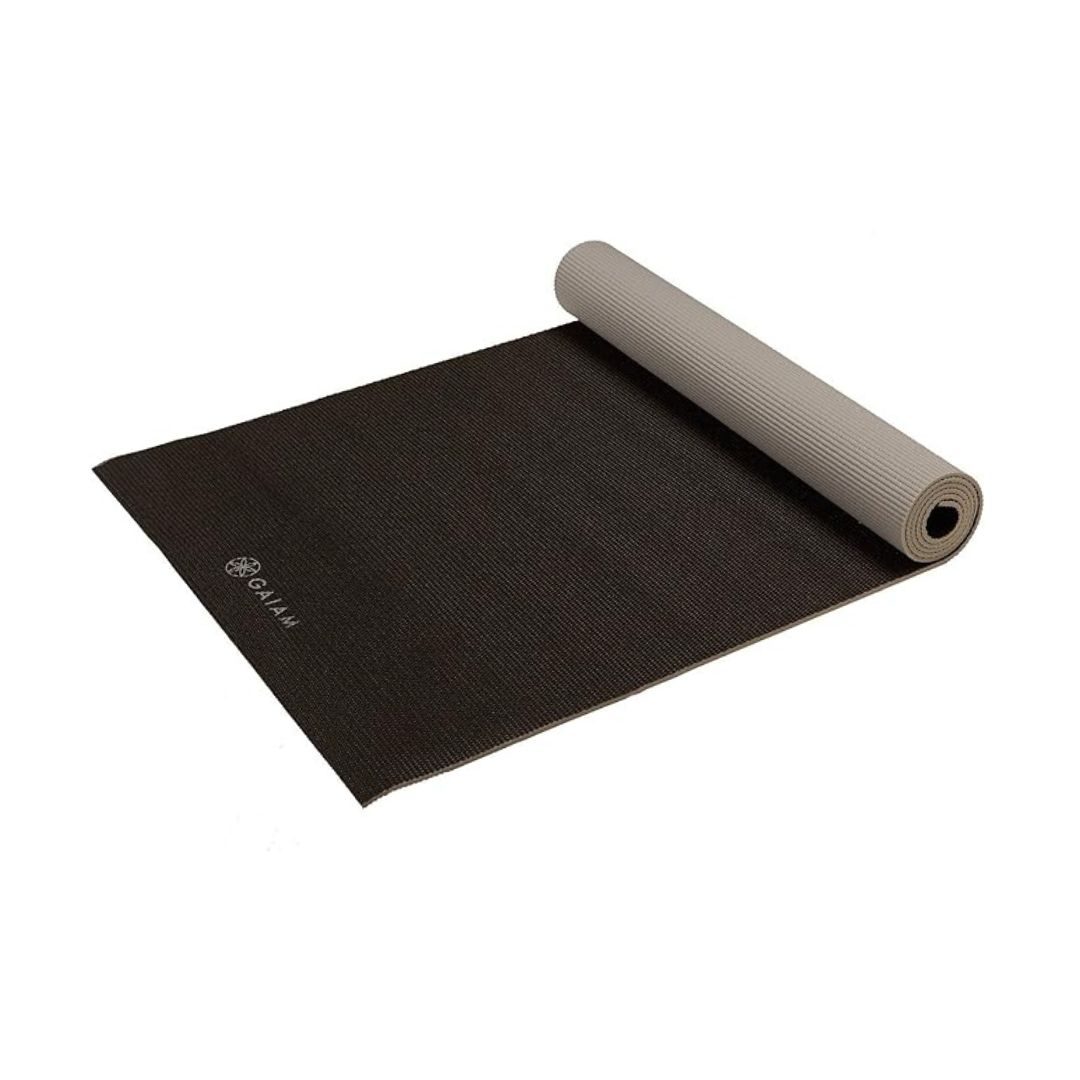Stop What You're Doing - This Is the Optimal Amount of Time To Hold a Plank for Maximum Results, According to PTs
The lowdown on the OG full-body exercise.


Much like Marmite, you either love or hate planks. But for those who reside firmly in the former club, you might be wondering: how long should I plank for?
Planking, which refers to the pose where you hold a push-up position either on your hands or on your forearms for a period of time under tension, is often referred to as the crème de la crème of exercises - and it’s for good reason.
For starters, research confirms that this OG exercise is “particularly effective” in enhancing overall body stability and mobility by focusing on strengthening the abdominal muscles. While a 2023 study also shows that perfecting an isometric exercise (like a plank) can also reduce blood pressure.
But, perhaps, the best thing about this bodyweight exercise? It can be done from just about anywhere, as all you need is a level surface and your bodyweight to reap the rewards.
However, the question that often comes up is just how long you should plank for, especially if you're new to bodyweight exercises. And, with the many different plank variations there are, what type of plank should you do? To help find out, we asked two personal trainers to share their insight.
While you're here, don't miss what happened when one writer tried planking every day for a week to see how effective the move was. We've also got tons of reviews on strength training every day for 7 days and strength training every other day.
Wondering, how long should I plank for? Your expert-led guide
What is a plank?
“A plank is an isometric exercise where you hold your body in a straight line from head to heels, supported by your forearms and toes,” personal trainer Michael Betts, director of TRAINFITNESS, explains. “Your core muscles work to resist gravity and prevent your hips from sagging or hiking up.”
Celebrity news, beauty, fashion advice, and fascinating features, delivered straight to your inbox!
The great thing about a plank is that there are so many different modifications to choose from. So even if you’re unable to hold a plank on your forearms and toes, there’s always another modification to try.
“My favourite plank alternative is the dead bug,” says Betts. “It's excellent for teaching core stability while moving your limbs, which is more like real life."
Unlike planks, where you're static, dead bugs add movement. "This builds stability through motion, not just holding position," Betts says. "Your brain learns to keep your spine neutral while your arms and legs move independently. That's functional core strength.”
What are the benefits of trying a plank?
Dropping down to the ground and holding your bodyweight up on your forearms and toes doesn’t just give your full body a workout. “Planks teach your core to function as a stabiliser rather than a prime mover,” explains Betts. “This translates directly to better posture, reduced lower back pain and improved performance in compound movements like squats and deadlifts.”
It probably comes as no surprise to hear that a plank also builds endurance in your deep core muscles, particularly the transverse abdominis. “This muscle acts like a natural weight belt, creating intra-abdominal pressure that protects your spine during daily activities and exercise,” Betts explains.
Betts says that planks also improve proprioception, which is your body’s awareness of its position in space. "Holding the position requires constant micro-adjustments from your nervous system, which increases your body control and balance," he adds.
Due to planks being an isometric exercise, they are also a great way to build strength, confirms Brett Durney, co-founder and a personal trainer at Fitness Lab. "The plank acts as a fantastic strength-building exercise for the core and can be used by beginners all the way through to advanced athletes."
"Core strength is crucial for spinal health, day-to-day efficient moving and translation into sport/other workout movements," Durney continues. That's because a strong and stable core will enable you to be able to perform other movements with ease. "Whether that's in the gym or just day-to-day activities - think gardening and picking up the kids - correctly and with great focus/precision," Durney says.
And, to top it all off, the humble plank can be progressed and regressed in multiple ways, making it highly versatile too. "Due to the above, it's a fantastic exercise for home," Durney adds.
Do planks really work - what does the current science say?
It's not just experts singing their praises for planks. Multiple studies have been done on this bodyweight exercise, with some fascinating results to boot.
Researchers in this 2021 study confirmed that planks could "effectively enhance" core muscle endurance and dynamic stability.
While this article, published in The Journal of Physiology, found that time under tension (TUT) exercises (like planking) are important in optimising muscle growth.
Fan of side planks? A study published in the Global Advances in Health and Medicine journal established that holding this variation of the plank pose could help reduce spinal curvature in scoliosis patients.
But it's not just physical benefits that planks have to offer. This 2023 study confirms that performing planks can "enhance the function of immunocytes" (AKA the white blood cells that play a crucial role in protecting the body from disease), while also improving respiratory capacity and physical fitness in older adults.
How long should I plank for?
Planking for beginners
The answer we all want to know!
Well, PT Betts recommends beginners should start with fifteen to 30 second plank holds three or four times a week, with at least one day of rest in between sessions. You should focus entirely on your form.
“Quality trumps duration every time,” he says. “If your hips start sagging or hiking up, end the set immediately.”
You could then progress by adding five to ten seconds each week rather than jumping to longer holds to allow your muscles and nervous system to adapt properly. “Most beginners can reach 60-second holds within 6-8 weeks following this approach," Betts adds.
Planking for intermediates
For intermediates, the aim is to hold a standard plank for 60 to 90 seconds.
Betts says that when you can do this, you should shift the focus from duration to progression.
“Rather than extending plank hold times indefinitely, introduce variations like single arm planks, plank to push-ups or weighted planks,” he says.
Again, complete three to four sessions a week, but focus on movement quality and exercise variation over pure hold time.
“A 45-second single-arm plank challenges your core more than a two-minute standard plank,” he highlights.
Planking for the advanced
Those who consider themselves to be advanced should rarely do standard planks for time. “Instead, use planks as skill practice or warm-up movements before more challenging exercises," Betts recommends.
"30-60 second holds with perfect form serve this purpose," Betts tells Marie Claire UK. "Focus on single limb variations, unstable surface planks, or weighted planks that challenge stability in multiple planes," the expert adds.
Frequency-wise, you can increase your planks to four to five times a week. "That's because advanced trainees use planks as movement preparation rather than primary strength builders," Betts confirms.
The conclusion
Of course, while the benefits of planking are tenfold, it’s important to note that even if you decide to plank every single day, you won’t be hitting your daily movement requirements.
That’s because the NHS recommends adults should complete at least 150 minutes of moderate intensity activity a week or 75 minutes of vigorous intensity activity a week, which is spread evenly over four to five days a week.
Therefore, if you intend to plank, it's best to include them as part of your wider workout. Not as the only form of movement you do in your day.
Shop MC UK's go-to strength training equipment:
Will planks give you abs?
Everyone has a pair of abs, as this nickname is given to your abdominal muscles. But as Betts explains, visible abs require a low body fat percentage, not just core strength.
"Planks build muscle endurance and stability but don't burn enough calories to create the caloric deficit needed for fat loss," the PT tells us. "You can have incredibly strong abs hidden under a layer of fat.
"Diet plays the largest role in revealing abs. You can plank for hours daily, but without proper nutrition, creating a caloric deficit, your abs will remain hidden."

Rebecca, or Becks, is a freelance journalist with more than ten years of experience in the industry. She specialises in all things health and lifestyle and has written for a number of brands including Women's Health, Stylist, the Evening Standard, Good Housekeeping, The Telegraph, Live Science, Tom's Guide and Fit&Well. Becks also writes copy for a number of brands and small businesses.
When she's not weight training, tracking down the best gym leggings, reading a book or at her desk typing away, you'll find her in the kitchen perfecting a new recipe or bake.



